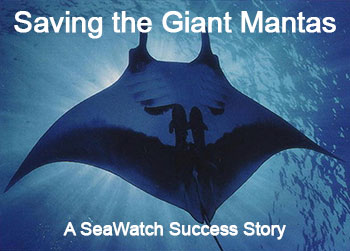
Eyes on the Water
A citizen observer witnessed fisherman illegally gillnetting inshore reefs and throwing harpoons at threatened mobula rays at Isla Espiritu Santo, La Paz, BCS, Mexico.
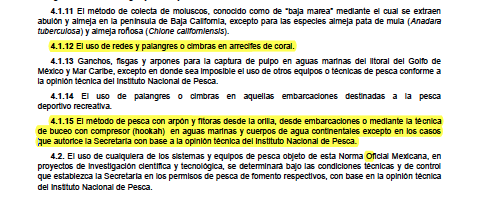
The image is from page 62 of the “DIARIO OFICIAL”, SEMARNAT – 21 January, 2015. The first highlighted line refers to the ban of the use of nets and longlines on coral reefs. The second highlighted area relates to the ban in the act of divers using compressed air and spears or spearguns to extract fish.
Since 2009, a ban on the netting of inshore reefs that have coral on them was approved by “El Secretaría de Medio Ambiente y Recursos Naturales” (SEMARNAT) – (translates to “The Secretary of the Environment and Natural Resources”). Five years later, the new law was officially published by the government agency in the “Diario Oficial”.
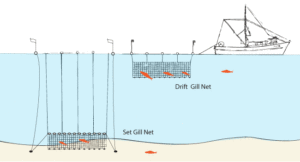
The two main types of gillnets are set and drift as shown here. When used in shallower water such as on inshore reefs, there is little room for escape for many marine animals.
Despite the fact that this law has been in publication for over two years now, bandit fishermen are still netting inshore reefs inhabited by both hard and soft corals often physically damaging the reefs corals in the process as well as removing keystone reef species, such as parrotfish, that are vital to the overall health of these socioeconomic habitats. Parrotfishes are made up of a group of over 90 species of fishes that collectively play a vital role in keeping the algae on the reefs in balance. They also play a significant role in bioerosion, a process whereby marine animals break down coral, rocks, shells and other hard substrates, forming the sand on the world’s beaches.
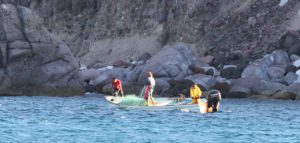
On May 8, 2017, Captain Zack Pilak of the vessel “Front Row” witnessed and documented illegal gillnetting on the inshore reef at the Salt Pond, Isla Espiritu Santo. In the photo Captain Zack looks on as the illegal fishermen retrieve their gillnet from across the beach at The Salt Pond. The name of the boat was “Rodriguez XIII” and it was seen stretching a gillnet across the span of the beach. Zack then watched the boat crew pull in their nets before leaving the scene.
Often, the gillnets are stretched over large areas of reef and using noise to create panic, the fish are driven towards the nets. Once the fish come into contact with the gillnet, they are trapped by their gills and become entangled. Gillnets are indiscriminate killers of much marine life including threatened sea turtles, sharks, dolphins, whales and sea birds.
Just one day later, another two pangas were seen illegally gillnetting the inshore reefs at Isla San Francisco, Espiritu Santo by Sea Watch in Mexico. They were both Rodriguez boats, Rodriguez VII and the other couldn’t be determined.
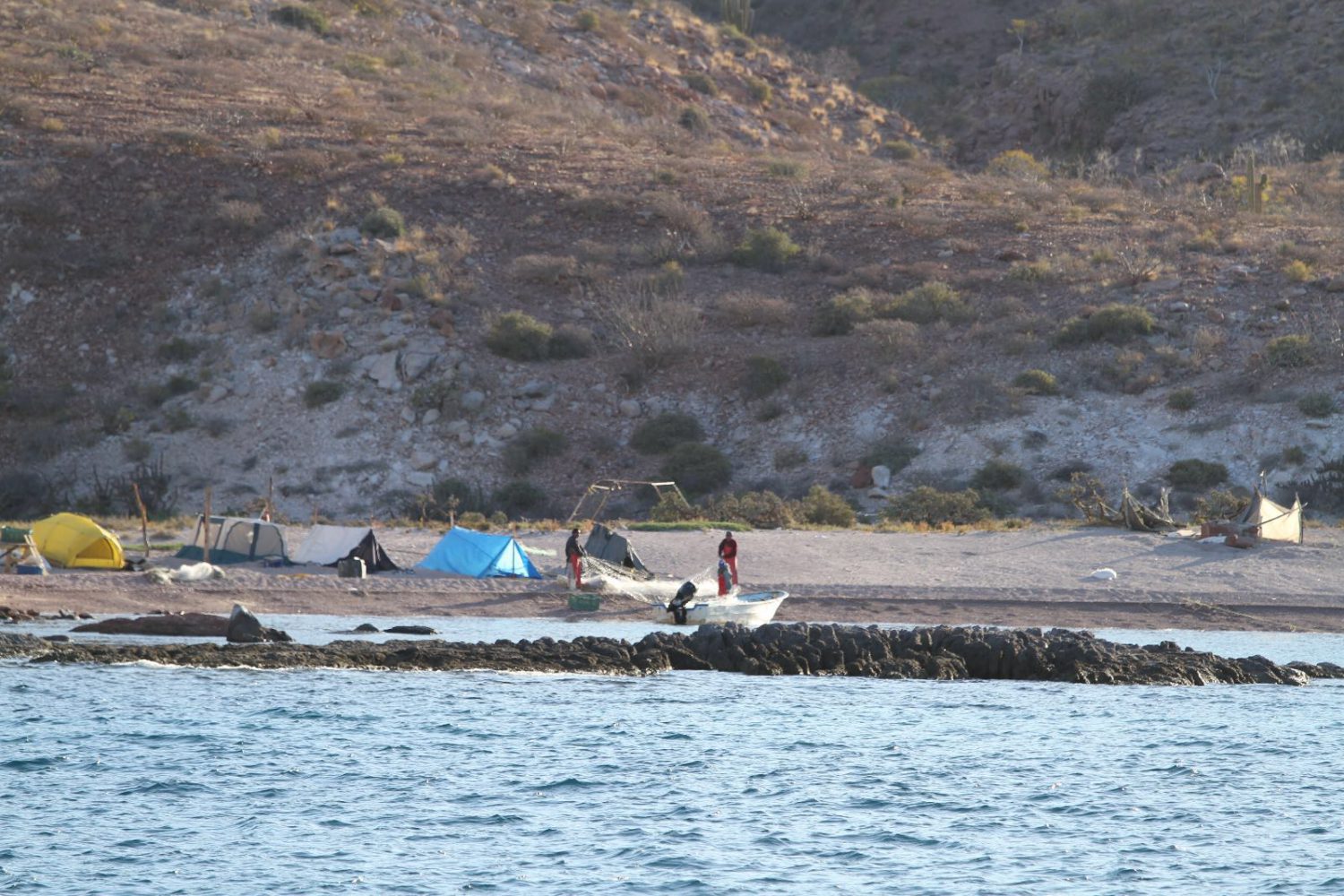
One of the two Rodriguez boats illegally gillnetting at Isla San Francisco in the Espiritu Santo Archipelago.
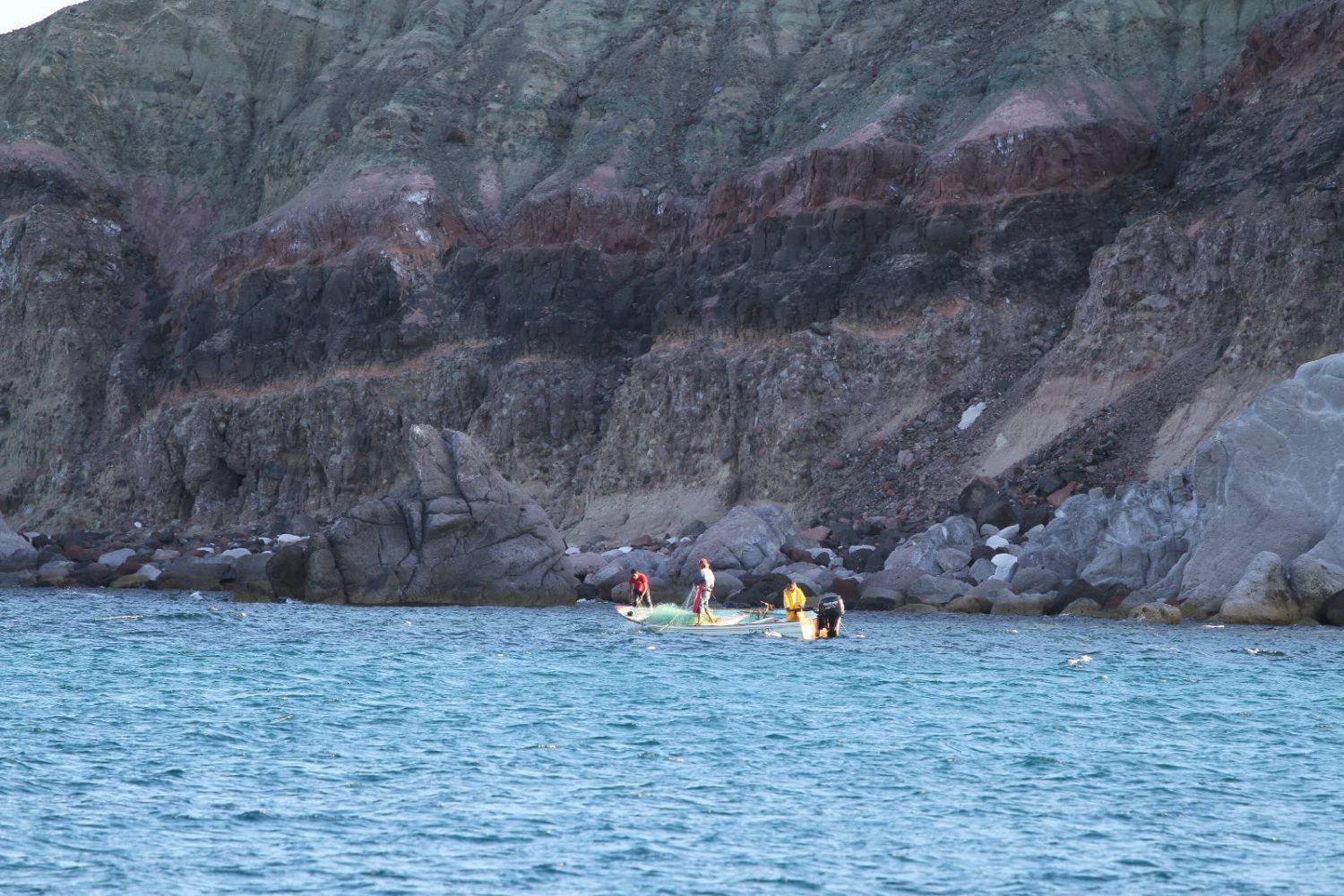
The second of the two Rodriguez boats seen illegally gillnetting at Isla San Francisco in the Espiritu Santo Archipelago.
Just minutes after the photos were taken, a drone was launched over the scene to obtain the aerial photographs below.

Drone shot of the fish camp at Isla San Francisco.

The same fish camp
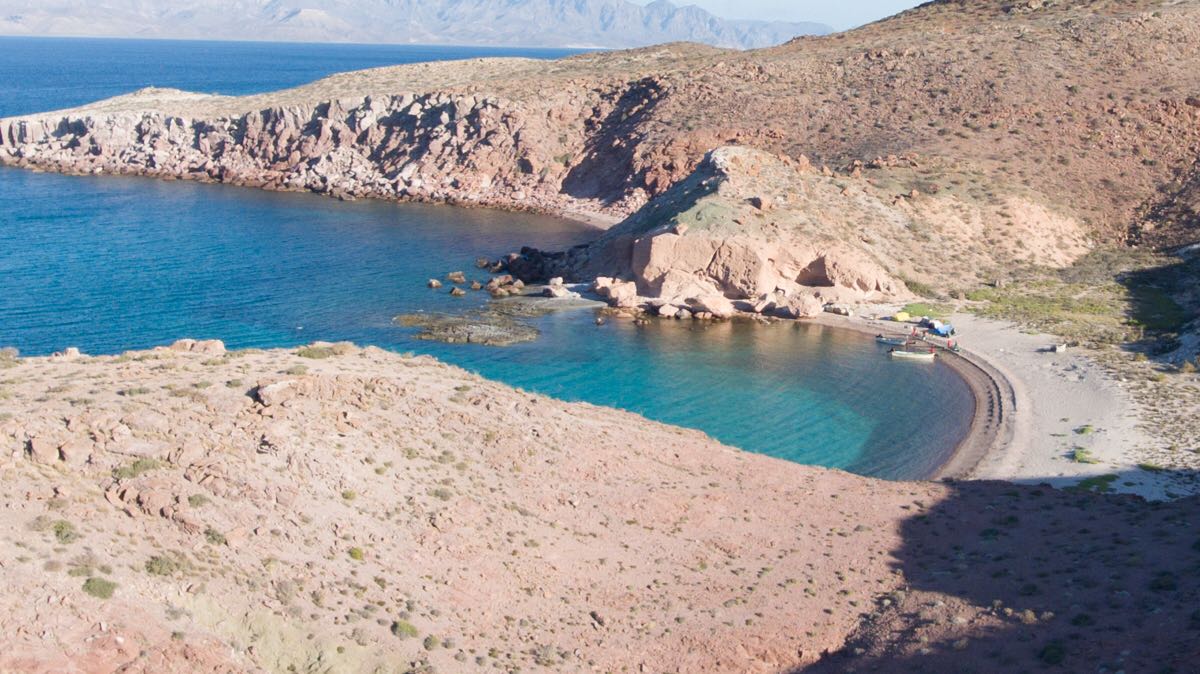
The fish camp at Isla San Francisco taken from a different angle. Here two Rodriguez boats were seen illegally gillnetting inshore reefs.
Below is a short video Captain Zack made to share with Sea Watch due his concerns about the unsustainable fishing practices he observed and the detrimental impact such activities will have on the future health of the Sea of Cortez.
Note: In the video, Zack states he saw the fishermen “throwing harpoons at manta rays”. They were actually of the mobula ray genus, close relatives of manta rays, some species of which are listed as either “Near Threatened”, “Vulnerable” or “Endangered” on the International Union for the Conservation of Nature’s (IUCN’s) red-list of threatened species.
Whilst fishing for mobula rays isn’t illegal in Mexican waters, it probably should be given the conservation status of the genus.
Thanks to Captain Zack Pilak for raising awareness about these events.
“Eyes on the Water” is an initiative directed by "Espíritu Santo es parte de ti" to use the local boating community to report illegal or suspicious fishing activities they encounter. If like Zack, you are a concerned boater, guide or tourist that spends time in the waters around La Paz Bay and the Espiritu Santo archipelago, then we need your help. You can contact us here.
May 16, 2017
SeaWatch Newsletters
What's New at SeaWatch:
SeaWatch Dream Come True
Since September of 2021, when our attorneys first petitioned the government to create large no take zones around Espiritu Santo National Park to facilitate reef and reef fish recovery, we have been building a dream team. A year later we have that team and a plan in place that is doing exactly that. To see the problem and solution. Click to view this short video...
SeaWatch Annual Raffle
Scott Hanson donated his popular 19" bronze limited edition sculpture "Smooth Sailing" that retails between $7,700 and $9,250 depending on the gallery. Buy one or more tickets here. But hurry as only 150 raffle tickets will be sold!.
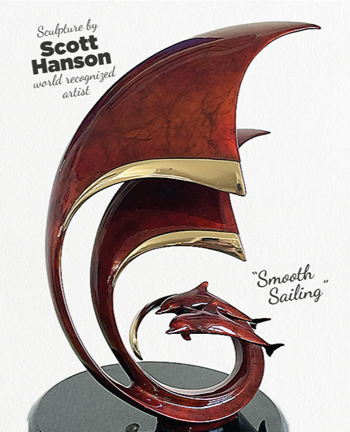
Creating the Next Cabo Pulmo
Fisheries Recovery in the Sea of Cortez
Where there are fish of any commercial value, fishing interests will find a way to take them.
In 2019 and 2020 with the legalization of fish traps in the Espiritu Santo National Park (banned in most other places 30 years ago) it became clear that where there are fish, fishing interests will find a way to take them. Read More...
Fish Traps Devastate Marine Environments
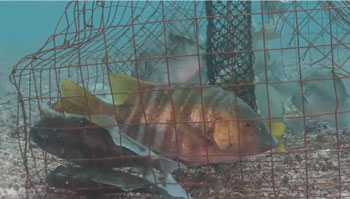
Watch this video to see the evidence of the devastation caused by fish traps on reefs and reef fish over time. These traps are legal in Mexico and tragically in Espiritu Santo National Park. To learn more about fish traps and see the devastation they cause Click Here...
Sea Lions and Fish Nets
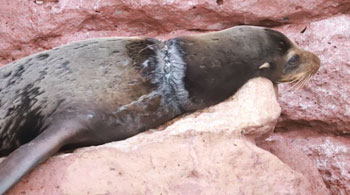
This video shows the entanglement of sea lions in fish nets and fishing gear in the Sea of Cortez. "Is this what we want in the Espiritu Santo National Park?"
Find SeaWatch On Facebook and You Tube


How You Can Help Save the Sea of Cortez
Consume Responsibly
Abstain from eating all fish that protect the health of the reefs including parrotfish and surgeon fish
Report Illegal Activities
Be our "Eyes on the Water" take photos, record positions, and send reports to the authorities
Donate
Your donations contribute to the work of Espiritu Santo es parte de ti and the efforts of ROC
